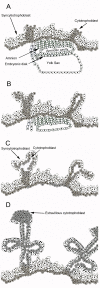hCG, the wonder of today's science
- PMID: 22455390
- PMCID: PMC3351023
- DOI: 10.1186/1477-7827-10-24
hCG, the wonder of today's science
Abstract
Background: hCG is a wonder. Firstly, because hCG is such an extreme molecule. hCG is the most acidic glycoprotein containing the highest proportion of sugars. Secondly, hCG exists in 5 common forms. Finally, it has so many functions ranging from control of human pregnancy to human cancer. This review examines these molecules in detail.
Content: These 5 molecules, hCG, sulfated hCG, hyperglycosylated hCG, hCG free beta and hyperglycosylated free beta are produced by placental syncytiotrophoblast cells and pituitary gonadotrope cells (group 1), and by placental cytotrophoblast cells and human malignancies (group 2). Group 1 molecules are both hormones that act on the hCG/LH receptor. These molecules are central to human menstrual cycle and human pregnancy. Group 2 molecules are autocrines, that act by antagonizing a TGF beta receptor. These molecules are critical to all advanced malignancies.
Conclusions: The hCG groups are molecules critical to both the molecules of pregnancy or human life, and to the advancement of cancer, or human death.
Figures






References
-
- Laub M, Jennissen HP. Identification of the anthelix motif in the TGF-ß superfamily by molecular 3D-Rapid Prototyping. Materialwiss Werkst. 2003;34:1113–1119. doi: 10.1002/mawe.200300715. - DOI
-
- Lehnert SA, Akhurst RA. Embryonic expression pattern of TGF beta type-1 RNA suggests both paracrine and autocrine mechanisms of action. Development. 1988;104:263–273. - PubMed
Publication types
MeSH terms
Substances
LinkOut - more resources
Full Text Sources
Other Literature Sources

